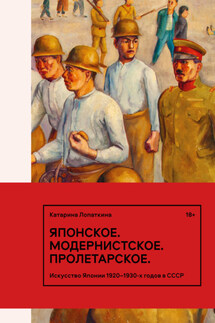Edgar Degas - страница 3
After the death of Degas’ father in 1873, the Degas family bank failed and there was nothing left for the painter but to rely on his art. Like the other Impressionists, he suffered from the fact that his paintings were impossible to sell and, like Renoir, Monet, Sisley, and Camille Pissarro, he went to Durand-Ruel to ask for money. And, like Sisley, he never painted commissions, he worked only on what interested him. He kept repeating, reworking, and varying his same favourite motifs, he liked improving himself. His friends recounted how he could start over and over again on one and the same work without ever fully completing it.
At the close of the 1870s, Degas added cabaret scenes to his repertoire – before Manet painted his Bar at the Folies-Bergère. What is represented in The Absinthe Drinker is, in fact, the work of a stage or film director. In 1877, Degas painted two paintings, Women on a Café Terrace, sometimes called Café, Boulevard Montmartre and Café-Concert at ‘The Ambassadors’. In these, the painter seems to be representing a moment glimpsed at random. Objectively and instantaneously the painter sets down on canvas the posturing, gestures, and expressions of the ladies as they chatter among themselves. “M. Degas seems to have hurled a challenge at the Phillistines, that is to say the classicists,” wrote the critic Alexandre Pothey in an article on the third exhibition of the Impressionists. “The women in Women on a Café Terrace are frighteningly realistic. These painted, withered creatures, reeking of vice, cynically recounting the events and gestures of the day – you’ve seen them, you know them, and you’ll come across them again on the boulevards soon” (L. Venturi, op. cit., vol. 2, p. 303).
It seems strange that as refined an artist as Degas, a frequenter of society salons, would have been aware in Paris of those washerwomen and pressers who became the objects of his study. Yet, when he was in New Orleans and felt nostalgic for France, it was the washerwomen who embodied and symbolised the French life of his time for him, to which he dreamt of returning as quickly as possible. He drew women leaning over their irons and found an original grace and beauty in their repetitive movements. His firm line set down the mechanics of their movements, while the colour, by means of a few light patches, gave the appearance of a black and white photograph as it is being developed (Two Laundresses).
He painted ballet classes during lessons and as the dancers rested. It was rare for a ballet dancer to appear on his canvases as an airy, ethereal vision. Drawing, in these instances, makes way for colour to play the principal role. In the unreal atmosphere of the stage, the pink, sky-blue, and white tutus glitter and disappear. Most often, the ballet dancer in a Degas work is shown simply as a woman exhausted from pushing herself too hard. She has lost her stage charm. She exercises endlessly at the bar, and she strains as she stretches her tired legs. She is weak and miserable. The truth of everyday life would enter in at the moments when the ballet dancer was protected from the gaze of strangers, or when, bent over with fatigue, she would have to go through the humiliation of a long wait to be seen by the theatrical director (Waiting, New York, Havemeyer Collection).






